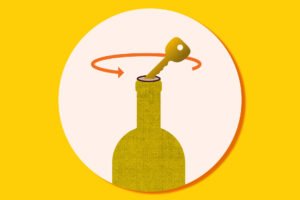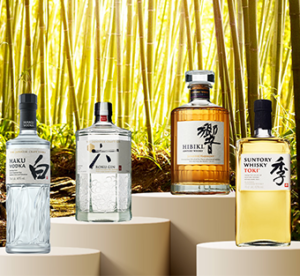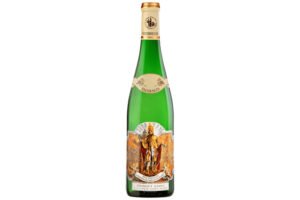Changing the Rules for Chianti Classico

[ad_1]
Another new classification for the Tuscan favorite aims to define regionality, but what difference will it make?
Over the past 10 years, producers of Chianti Classico have been discussing major changes regarding the identification of their territory.
For most local vintners, writing Chianti Classico on the label was not enough; as this is a sizeable production zone, they wanted to highlight the stylistic differences of wines from one area to another. Happily, their wishes will now come true, as the producers of the Chianti Classico wine consorzio approved new regulations last month that will mark important changes in how these wines can now be identified.
The most important decision of these new regulations has been the creation of 11 different areas of Chianti Classico that will be known as UGA, Unità Geografiche Aggiuntive (Additional Geographical Units). The 11 UGA are (in alphabetical order): Castellina; Castelnuovo Berardenga; Gaiole; Greve; Lamole; Montefioralle; Panzano; Radda; San Casciano; San Donato in Poggio and Vagliagli.
Several of these UGAs, such as Greve, Radda and Gaiole are communes in this part of Tuscany, while others are municipalities or frazioni (akin to suburbs or neighborhoods) of communes; for example, Lamole, Montefioralle and Panzano are all part of the commune of Greve. These new changes now allow producers to list the UGA on the front label, under the words Chianti Classico; previously a producer located in Panzano, Castelnuovo Berardenga or any of these 11 units could only list that name on their back label (as part of the winery’s address), as the wine had to be identified merely as Chianti Classico.
Breaking it all down
Why is this change so important to the producers and growers of Chianti Classico?
“Chianti Classico is quite a large area,” says Giovanni Manetti, president, Chianti Classico Wine Consortium. “There are many, many combinations of altitudes, microclimates, soil compositions, exposures to the sun, so in every village there are different characteristics in the wines produced in those areas.”
Manetti notes that 90 percent of the members approved this new system, as their aim was to underline the specific origin of each wine. “I think we would like to communicate that the goal is to reinforce the relationship between a wine and a specific place, a specific part of the Chianti Classico territory that is giving birth to that wine. So, I believe there is a desire of wine lovers to know more in depth, which is the relationship between the place and the wine, the territory and the wine. It is an attempt to satisfy this desire.”
Sergio Zingarelli of Rocca delle Macie in Castellina emphasizes that the UGA are about geographical distinctions and not critical acclaim. “I think it’s a way to better explain our area. It’s not a contest to see what the best area in the territory is, but to explain the differences between the areas, such as Castellina, Radda, Greve and so on.”
While the time frame for the new labeling is still uncertain, Manetti hopes this will take place in 12 months. “My goal is to have UGA on Chianti Classico Gran Selezione 2019 that will be released on July 1, 2022,” he says. These new regulations now go to the Ministry of Agriculture for final approval, which Manetti believes will be nothing but a formality. Francesco Ricasoli, proprietor of Barone Ricasoli in Gaiole, comments that “it’s already applicable in a way because we as a consorzio have the authority to decide what to do for ourselves”.
The first wines with UGA names will be limited to Gran Selezione, one of the three types of Chianti Classico: the other two being annata (vintage) and riserva. Any Gran Selezione that will include a UGA on the label must contain a minimum of 90 percent Sangiovese (currently, that minimum is 80 percent); international varieties, such as Cabernet Sauvignon and Merlot will not be permitted in these Gran Selezione wines, as only indigenous varieties including Canaiolo, Colorino and Mammolo will be allowed as a maximum of 10 percent of the blend.
The Gran plan
Why only Gran Selezione to start with? “We thought it would be much better to start from the top category of the pyramid that is positioned in a different price point category in a restaurant or retail shop, a higher quality that is much more attractive for collectors,” comments Manetti. “And then we would like to expand the use of UGA on the label to the other two categories little by little.” As Gran Selezione only represents 6 percent of the total production of Chianti Classico wines, this is clearly a trial for the producers to see how this new system will be received by consumers, the trade and the media.

© Tom Hyland/Wine-Searcher
| Radda’s vineyards have also been included in the re-classification.
Regarding eliminating international varieties, while some producers disagreed with this decision, most think it will not have a large effect on future wines. “[Around] 80-90 percent of the Gran Selezione are made without international grapes,” notes Zingarelli. “It’s the same that we have made over the past 10-15 years.”
For Manetti, the elimination of international varieties was a relatively easy decision. “If you want to exalt the specifics of every territory, if you use the same variety, or a higher amount of Sangiovese without international varieties, I think it will be much better to compare Gran Selezione wines coming from different territories.
“So, if you want to see what the real characteristics of Radda are compared with the characteristics coming from Gaiole or Castelnuovo Berardenga, it’s much easier to compare wines made from Sangiovese, plus the salt and pepper of local varieties, traditional varieties.”
As one of the most important points about using UGA on a label is the origin of the grapes, a UGA designation will only be allowed for a Gran Selezione if all the grapes are from one UGA. Thus, a producer who owns vineyards in two or more UGAs and blends the grapes together for his or her wine can still label the wine as a Gran Selezione, but without a UGA name.
Federica Mascheroni Stianti of Castello di Volpaia in Radda explains the thinking on this point: “With the Gran Selezione, which by definition comes from your own estate grapes, it’s much easier to know where the wine comes from. You know it comes from that specific piece of land. I think that is why this was done.
“If you google a wine from Radda, you will definitely see a lot of woods and forests around which makes it very different from a winery located in the area of Panzano, where it’s much more vineyards and lands and softer hills. So, for sure you will understand that the land of Radda is different from that of Panzano.”
Going further
At some point in the future, the UGA designations will also be approved for annata and riserva examples of Chianti Classico, but the current regulations will be kept the same for those wines. “One day when UGA will be extended to riserva and annata, it will be kept 80 percent Sangiovese and 20 percent whatever you like,” says Ricasoli.
While most producers stand firmly in support of these new rules, some think that more could have been done regarding the creation of the UGAs, as Giovanni Poggiali, proprietor of Fèlsina in Castelnuovo Berardenga, reasons. One of his most highly praised wines is Chianti Classico Rancia from a single vineyard at the estate, a 100-percent Sangiovese wine that was first produced from the 1983 vintage. Poggiali believes that these single vineyards are unique, possessing special characteristics that make them separate from each other. “Referring to the cru, the single vineyards or part of a vineyard, the expression of Sangiovese is determined by the soil, and we have an enormous number of soils from a single vineyard here in this area.
“We started with riserva Rancia, many years ago in the 1980s. We said we have to better specify the work we do in the vineyards and in the wines. So, you can imagine what is my ideal division of the Chianti Classico area. It’s not 11 or 12 or 15, it’s 90, 98, or 100 probably, the same process that in many other regions, historical regions, where it makes sense to do so.”
Ricasoli personally believes that “it would make sense to have another UGA in Gaiole, but we have to see it, as it’s something that you will keep for the life of the territory”. According to him, the area of Monti could be one, while he prefers his locale of Brolio, especially for its “historical value and well-respected name”.
So, while this decision was not unanimous (what decision is in Italy?), the fact that it was overwhelmingly approved is evidence that the producers of Chianti Classico have delivered a strong message, as Laura Bianchi of Castello di Monsanto in Barberino Tavarnelle (UGA San Donato in Poggio) explains.
“It’s something additional that I’m sure will give more prestige to the entire denomination. When you can explain details in a denomination, you give more details, you give more elements to the consumer to better understand what he is going to drink. It’s something that adds value. But the main denomination is Chianti Classico – it’s not going to change.”
[ad_2]




